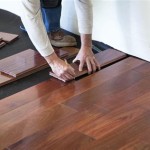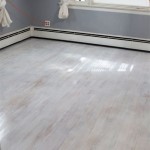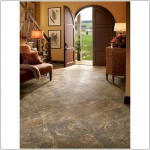Laminate flooring transitions are an important part of any flooring installation project. They are used to bridge the gap between two types of flooring materials and create a smooth transition from one floor to the next. They are also used to reduce the risk of tripping and slipping from one floor to the next. Laminate flooring transitions come in many different styles, colors, and shapes, making it easy to find one that matches the look and feel of your home.
Types of Laminate Flooring Transitions
The most common types of laminate flooring transitions are T-molding, Reducer, End Cap, Threshold, and Quarter Round. T-molding is used to transition between two floors of the same height and is commonly used between hardwood and laminate floors. Reducers are used to transition between two floors of different heights and are often used between laminate flooring and tile. End caps are used to cover the edge of laminate flooring and provide a finished look. Thresholds are used to bridge the gap between two floors of different heights, such as between laminate and carpet. Quarter rounds are used to cover the expansion gap along the walls and provide a finished look.
Choosing the Right Laminate Flooring Transition
When choosing the right laminate flooring transition for your project, you should consider the type of flooring you are transitioning between, the thickness of the flooring, and the color of the flooring. You should also consider the width of the gap you need to bridge and the height difference between the two floors. The type of transition you choose should also match the style of your home and the look you are trying to achieve. It is important to measure the gap and determine the height difference between the two floors to ensure a proper fit.
Installing Laminate Flooring Transitions
Installing laminate flooring transitions is not a difficult task, but it is important to take your time and make sure everything is done correctly. Depending on the type of transition you are using, you may need to use a saw or special tools to cut the transition pieces to the correct size. You may also need to use adhesive or nails to secure the transition pieces in place. If you are unsure of how to install the transition pieces, you may want to hire a professional to do the job for you.
Benefits of Laminate Flooring Transitions
Laminate flooring transitions provide a variety of benefits, including improved safety, reduced risk of tripping and slipping, and a more finished look. They also help to create a seamless transition between two types of flooring materials and reduce the risk of damage to the flooring. Finally, they can help to reduce noise when walking from one floor to the next, making your home a more comfortable and quieter place.
Caring for Laminate Flooring Transitions
It is important to properly maintain and clean your laminate flooring transitions to ensure that they last for years. You should vacuum or sweep the transition pieces regularly to remove dirt and dust. You should also mop or wipe down the transition pieces with a damp cloth. It is also a good idea to use a wood cleaner or polish on the transition pieces to keep them looking their best.
Conclusion
Laminate flooring transitions are an important part of any flooring installation project. They come in a variety of styles, colors, and shapes, making it easy to find one that matches the look and feel of your home. When choosing the right laminate flooring transition, you should consider the type of flooring you are transitioning between, the thickness of the flooring, and the color of the flooring. Installing laminate flooring transitions is not a difficult task, but it is important to take your time and make sure everything is done correctly. Laminate flooring transitions provide a variety of benefits, including improved safety, reduced risk of tripping and slipping, and a more finished look. It is important to properly maintain and clean your laminate flooring transitions to ensure that they last for years.















Related Posts








